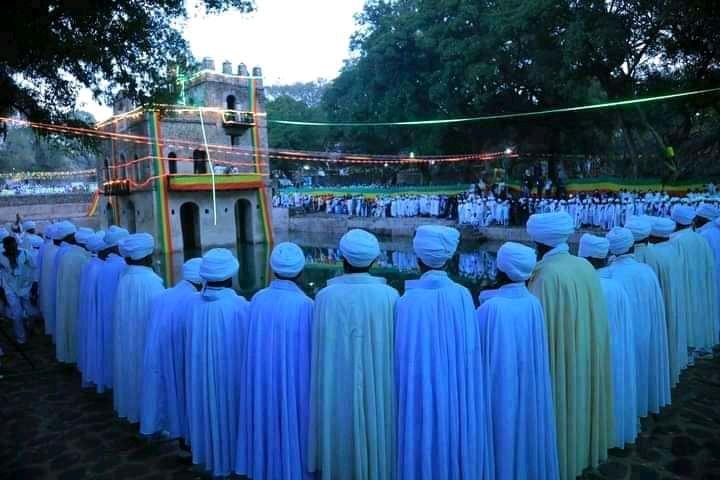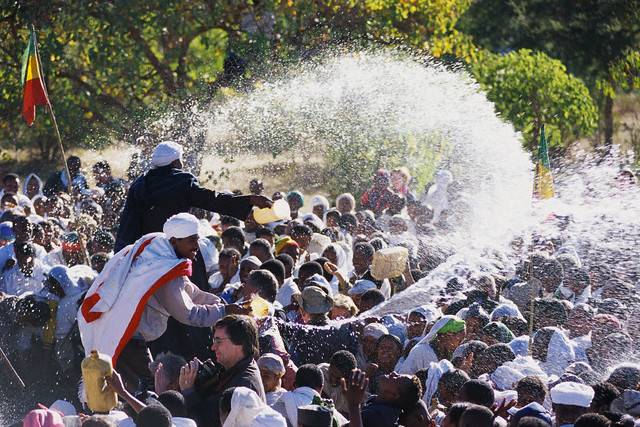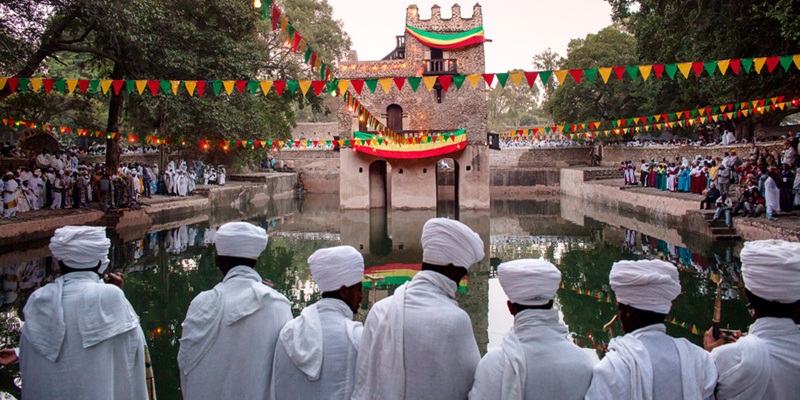ETHIOPIAN TIMKET(ETHIOPIAN EPIPHANY) It is the most colorful festival of the year celebrated for the memorandum of Christ’s baptism. The religious ceremony is best known for it is the combination of old and New Testament, which is unique to Ethiopia now a day.
The church Tabots (replica of Ark of the Covenant) are taken to a nearby body of water on the afternoon of the eve. During the night, the priests and faithful participate in a vigil around the Tabots. The following morning, the crowds gather around the water, which is blessed, the splashed on to them; religious vows are renewed. The Tabots is then paraded back to the church accompanied by much singing and dancing. Gondar is considered the best place to be on Timket.
Overview
Timkat (which means “baptism” in Amharic) is the most important festival in the Ethiopian calendar.
It is the Ethiopian Orthodox celebration of Epiphany celebrated on January 19 (or 20 on Leap Year), corresponding to the 10th day of Terr following the Ethiopian calendar. Timket celebrates the Baptism of Jesus in the Jordan River. This festival is best known for its ritual reenactment of baptism (similar to such reenactments performed by numerous Christian pilgrims to the Holy Land when they visit the Jordan).
During the ceremonies of Timkat, the Tabot, a model of the Ark of the Covenant, which is present on every Ethiopian altar (somewhat like the Western altar stone), is reverently wrapped in rich cloth and born in procession on the head of the priest. The Tabot, which is otherwise rarely seen by the laity, represents the manifestation of Jesus as the Messiah when he came to the Jordan for baptism. The Divine Liturgy is celebrated near a stream or pool early in the morning (around 2 a.m.). Then the nearby body of water is blessed towards dawn and sprinkled on the participants, some of whom enter the water and immerse themselves, symbolically renewing their baptismal vows.








